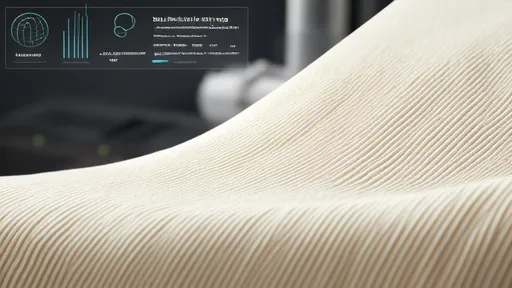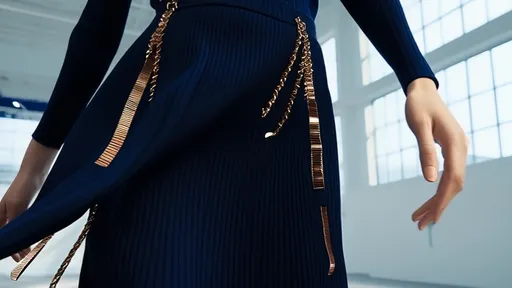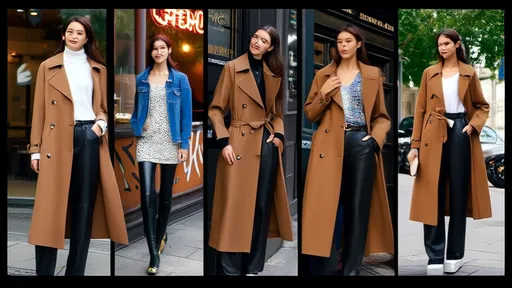As winter deepens and temperatures plummet, the art of layering becomes not just a style choice but a necessity. However, the perennial challenge remains: how to stay warm without sacrificing style or appearing bulkier than necessary. The secret lies not in avoiding layers altogether, but in mastering the delicate balance of material contrasts and proportions.
One of the most effective strategies for achieving a sleek winter silhouette is the principle of material contrast, specifically through the strategic pairing of thick and thin fabrics. This approach, often referred to as the golden ratio of layering, emphasizes the interplay between different textures and weights to create visual interest while maintaining a streamlined appearance. The key is to avoid uniform thickness throughout your outfit, which can easily lead to a boxy or overwhelmed look.
Begin with a foundation of lightweight, thin materials close to the skin. Base layers made from merino wool, silk, or high-quality synthetic blends provide excellent insulation without adding bulk. These fabrics wick moisture away from the body while trapping heat, allowing you to stay warm without the need for excessive thickness. The slim profile of these materials creates a smooth canvas upon which to build the rest of your ensemble.
Building upon this thin foundation, introduce medium-weight pieces that add structure and warmth without overwhelming your frame. Think of tailored wool trousers, a fitted sweater, or a structured blazer. These items should follow the natural lines of your body, avoiding excessive looseness or stiffness that can create unwanted volume. The goal here is to create a middle layer that bridges the gap between your thin base and any outerwear, ensuring a gradual transition rather than a jarring jump in thickness.
The outermost layer is where you can incorporate thicker, more substantial materials without fear of appearing bulky. A well-cut wool coat, a padded jacket, or a structured parka can provide the necessary protection from the elements while serving as the statement piece of your outfit. The magic happens in the contrast between this outer layer and what lies beneath; the difference in thickness creates depth and dimension that actually makes you appear slimmer rather than larger.
Beyond simply alternating thick and thin, consider the textural relationships between your layers. Pairing a chunky knit sweater with sleek leather pants, for example, creates visual interest through contrast while maintaining a balanced silhouette. Similarly, a flowing silk blouse beneath a structured wool blazer offers both tactile and visual variety that keeps the eye moving, preventing any single element from dominating your appearance.
Proportion plays an equally important role in this layering equation. The golden ratio isn't just about material thickness but about how these materials are distributed across your body. Generally, keeping bulkier items on your upper or lower half while balancing with slimmer pieces on the opposite side creates a harmonious look. For instance, pair a substantial coat with slim-fit trousers, or balance a thick sweater with a flowing skirt that adds movement without width.
Color coordination further enhances the slimming effect of material contrast. Using similar tones throughout your layers creates a continuous line that elongates the silhouette, while strategic pops of color can draw attention to your strongest features. Darker shades naturally recede, making them ideal for outer layers or areas you wish to minimize, while lighter colors can highlight and accentuate.
Accessories provide the finishing touches that can make or break your layered look. A thin scarf knotted neatly rather than wrapped thickly around the neck maintains neckline definition. Similarly, fitted gloves and sleek boots contribute to the overall streamlined appearance without sacrificing warmth. Remember that every element, no matter how small, contributes to the overall balance of your outfit.
The true artistry of winter layering lies in understanding that warmth and style are not mutually exclusive. By thoughtfully combining materials of varying weights and textures, you can create outfits that are both functional and fashionable. This approach allows you to adapt to changing temperatures throughout the day simply by adding or removing layers, all while maintaining a put-together appearance.
Experimentation is key to mastering this technique. Take time to try different combinations in front of a mirror, noting how certain fabrics interact and how proportions affect your overall silhouette. Pay attention to how layers move with your body; stiffness can create awkward bulk while fluid materials tend to drape more gracefully. The goal is to create a cohesive look where each layer complements the others rather than competing for attention.
Ultimately, the golden ratio of layering is less about strict rules and more about developing an eye for balance and proportion. It's about understanding how different materials behave together and how to use their inherent properties to your advantage. With practice, you'll find that layering becomes not just a winter necessity but an opportunity to express your personal style while staying comfortably warm.
As you navigate the colder months, remember that the most stylish winter outfits are those that appear effortless. The magic of material contrast lies in its ability to create depth and interest while actually minimizing visual weight. By embracing the interplay between thick and thin, structured and fluid, heavy and light, you can transform winter dressing from a chore into an art form.

By /Aug 21, 2025

By /Aug 21, 2025

By /Aug 21, 2025

By /Aug 21, 2025

By /Aug 21, 2025

By /Aug 21, 2025

By /Aug 21, 2025

By /Aug 21, 2025

By /Aug 21, 2025

By /Aug 21, 2025

By /Aug 21, 2025

By /Aug 21, 2025

By /Aug 21, 2025

By /Aug 21, 2025

By /Aug 21, 2025

By /Aug 21, 2025

By /Aug 21, 2025

By /Aug 21, 2025

By /Aug 21, 2025

By /Aug 21, 2025